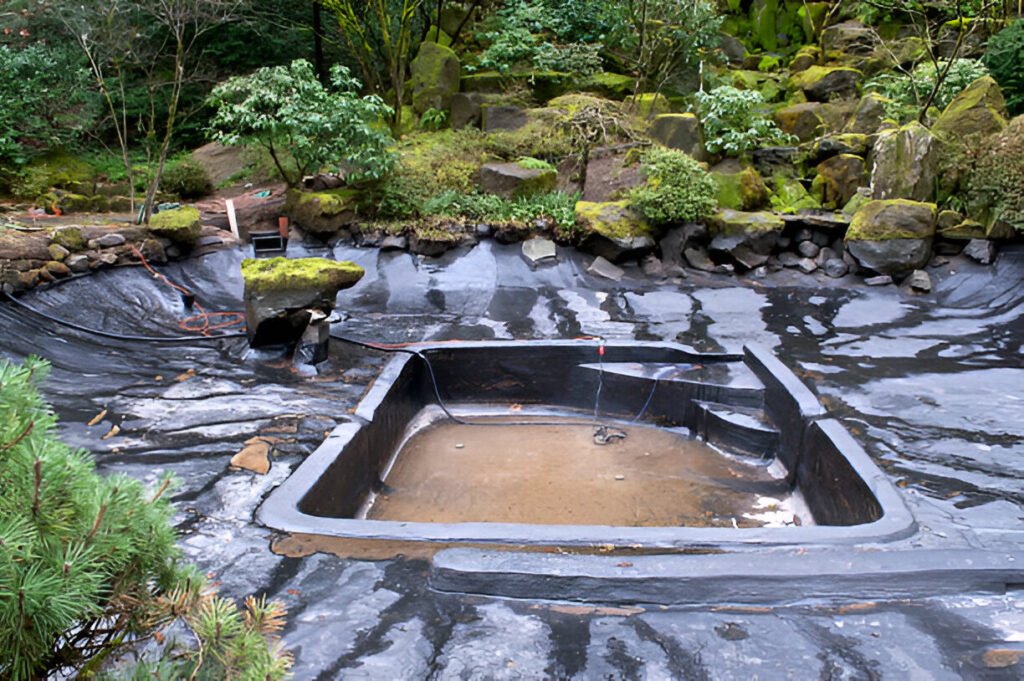Whether building an outdoor space for contemplation or a serious koi pond, one of the most significant decisions will be pond liner selection. The liner is responsible for keeping water right where it belongs and preventing it from seeping away into the soil. Picking a suitable one will make the difference between easy maintenance of your tranquil retreat and running around all day making repairs.
Many varieties of pond liner exist. You need to get familiar with each one’s uniqueness. According to the water garden specialists, That Pond Guy, choosing the right liner depends largely on your pond size, shape, and budget.
Flexible Pond Liners
Flexible liners are popular among DIY pond builders since they adapt to any shape or size.
Common flexible liner choices include:
- EPDM Rubber Liners: Thick, durable, and highly flexible, most EPDM liners are resistant to UV rays, ozone, and temperature changes as well. In favorable conditions, these liners last a long time outside. Also, they are fish-safe, which is a must for wildlife ponds.
- PVC Liners: Cheap, flexible liners not as durable as EPDM. Over time, and especially under extreme temperature conditions, they become brittle. Still, a good choice for smaller ponds or tight budgets.
- HDPE Liners: They are the stiffest of the three but have excellent puncture resistance. It is best for larger commercial ponds or industrial applications but might be more difficult for homeowners to install.

Preformed liners
Preformed liners are rigid and come in various shapes and sizes. Depending on the manufacturer, they are made of hard plastic or fiberglass. A preformed liner is designed for someone wanting a quick setup with less fuss. Installation requires digging out a hole matching the liner shape, dropping it right there, and leveling it.
The good part – They are durable, with no folds or seams to work around.
The bad part – You must settle for whatever shape and size are available because custom-fitting preformed liners are nearly impossible.
Concrete and Clay liners
Concrete or clay liners offer a more permanent and natural look. Concrete ponds are very strong allowing to style it in but they are more challenging to install and require more time and skill. They also need sealing to ensure they are watertight and safe for fish.
Clay liners, on the other hand, are usually used for bigger natural-style ponds and reservoirs. Bentonite clay will swell up when wet, forming a seal retaining water. This is an old-fashioned technique common in rural or agricultural places.
Which pond liner is ideally suitable for you?
Choosing the right liner should depend on the objective of your pond, its position, and your budget. If custom finishing is what you aim for or space is an issue, you can consider flexible liners like EPDM. For a straightforward and uncomplicated gutter, a preformed liner is time-saving. For larger projections, long-term durability might require concrete or clay to go through all the hassle.
Remember to include extra underlay to protect against sharp rocks or roots damaging the liner. Proper installation is equally as crucial as the liner itself. If you are not confident in your skills, consider hiring a pond expert to assist with applying concrete to guide you along the way.
Final thoughts
Your pond will only be as good as the liner beneath it. Building a decorative feature or a complete ecosystem for aquatic life makes choosing the right liner all the more critical. That way, you have a hassle-free, beautiful pond into eternity.

